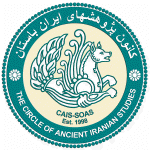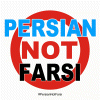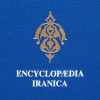|


CAIS
The Circle of Ancient Iranian Studies
Home
About CAIS
Articles
News Archive
Announcements
Seminars
Submission
Contact Us
Copyright
Disclaimer
Search
Follow us on




| |
|
.
|
|
CAIS ARCHAEOLOGICAL
& CULTURAL NEWS©
|
|
Even Today,
the Ancient City of Bam is the 'Emerald of the Desert'
|
|
News
Category: Parthian
Dynasty - Islamic
Period
|
|
03
January 2004
|
|
Last week, as they viewed shocking
footage of the devastation that a 6.6 magnitude
earthquake had wreaked on the city and on its 2,000-year
old Citadel, was the first time most Americans had ever
heard of the Iranian city of Bam.
But for native Iranians like Mehrdad Hadighi, associate
professor of architecture in the University at Buffalo
School of Architecture and Planning, Bam was, and still
is, a city of dramatic beauty, even as much of its
ancient heritage now lies in ruins.
"Bam is the evergreen city in the gray of the
desert," said Hadighi, "It has been called the
'Emerald of the Desert.'" Hadighi noted that last
week's damage to the world's largest clay structure and
its surroundings presents humankind with an almost
immeasurable loss.
Yet, at the same time, he added that in his culture,
that kind of loss is interpreted and experienced
differently than it would be in the Western world.
"The Western model is one of distancing from
history and the past, which makes it easy to identify
and delegate the past to 'preservation,' while we live
our modern lives," he said. "In older, Eastern
cultures, like Iran, one is history and a part of
history. History is a continuum and we live it everyday;
we are history. We will continue to live with the Arg
and its ruins." Arg is the Persian word for
citadel.
Historically, he said, Bam has been lush and green, with
vast palm groves and citrus orchards that flourished
thanks to an extensive system of ancient subterranean
aqueducts accessing rich, underground water reserves.
While modern industries have begun to thrive in Bam,
especially the automotive industry, he said that the
city still has a major agricultural role.
"The dates that grow in Bam are among the finest in
the world, are internationally known and present a major
export for Iran," he said, noting that they are
available throughout the U.S. and Europe.
The area also produces sweet lemons and oranges, which
are well-known throughout Iran and the city was once a
major trade town on the spice road as well as a center
for the silk trade. Now significantly damaged, the
city's 2,000-year-old ancient Citadel was a very popular
attraction for tourists from around the world.
Some have pointed to the Citadel as an example of early
Islamic culture, suggesting that it provides a window
into early Islamic cities and the lives of its citizens.
"The Citadel, Arg-e-Bam, and the main fortification
walls are pre-Islamic in their original form and date
back to 521 B.C.," said Hadighi, adding that there
was an important Zoroastrian (ancient Iranian religion)
fire temple in the Arg, which was later replaced by a
mosque.
The Arg and its vicinities also play a major part in the
Shahnameh (The Book of Kings), Hadighi continued, a very
significant pre-Islamic Persian book of poetry and tales
documenting the Persian kingdom.
Source
: Newswise
|
|
| |
|


|
|
 |

Persian
NOT Farsi

Encyclopaedia Iranica

The British Institute of
Persian Studies

The British Museum

The Royal
Asiatic Society
of Great Britain and Ireland
|
|

![]()
